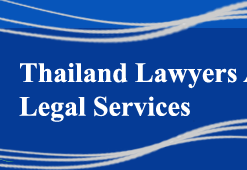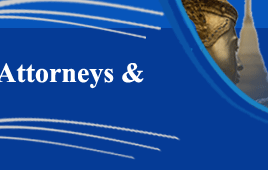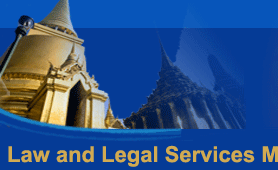



    |
||
| |
||
Articles
Legal News
Thailand Lawyer
Links
Home
Private Use on Musical Works, Rights of Public
Performance, and Collecting Society Systems.
By' Judge Visit Sripibool
the transmission right in the musical works, except where the music on hold came from an authorized sound broadcast rather than a recording. Under the Copyright Act the "broadcast to the public by transmitting is not limited to wireless transmissions involving the kind of widespread dissemination which is normally implicit in the concept of broadcasting. Any wireless transmission will now fall within the broadcast right even though it is make to only one person at a time rather than to the public in a collective sense. However after the decision released, the Copyright Convergence Group (CCG) in Australia recommended to the Copyright Law Review Committee. The CCG considered that it would be desirable expressly to exclude from the scope of the transmission right certain communications which are of an essentially non-commercial, private or domestic nature such as interactive services, telephone conversations, telebanking and videoconferencing services. The CCG did not want to define the term of 'public' preferred the term that the court interpreted. The CCG was concerned to ensure that copyright owners should be able to license point-to-point transmissions of copyright material, such as on demand services, even though they did not involve a transmission to the public as commonly understood.(159)
However, it is not mean that any act as a public performance will be deemed as an infringement. Even though it is the public performance but such circumstances is exempted by law impliedly that is not infringement. For example, a person who gives a public performance by means of any radio receiving set or gramophone in any place need not pay anything for the right to do so such public performance is a lawful act and no infringement of copyright.(160)
Public Performance in the United Kingdom
In the United Kingdom, personal use in public even without direct or indirect charges is to be deemed as an incident of some commercial activity. It would be infringed.(161) In Turner(162) the court said that music played to employees during working hours was a performance in public as the worker were effectively an audience. Performances of music over loudspeakers at a factory as part of "music while you work" programmes for employees, or over loudspeakers or through juke boxes to provide entertainment for the clientele at a bar, caf?, discotheque or restaurant, or any section of the public (other than a purely domestic circle) constitute performances in public, as do performances at public concerts, dances or recitals.(163) Where a performer performs the music as written by the composer following a closely as possible the composer's directions, and not, in his interpretation, substantially varying the work of the composer or adding to it new elements of melody of harmony, it is probable that no new work or adaptation in created by the performance: the performer has no rights in his performance.(164)
Public Performance in the United States
In the United States, the Copyright Act of 1976 confers the exclusive right "to perform the copyrighted work publicly"(165) , it would be noted that Section 106(4) the exclusive right applies only to "literary, musical, dramatic, and choreographic works, pantomimes, and motion pictures and other audiovisual works." This omits (1) pictorial, graphic, or sculptural works, which by their nature cannot be performed, but as to which the comparable right of public display applies, and (2) sound recordings. Congress omitted performance rights from the latter for policy reasons.(166)
Act of 1976 broadly defines "perform" and "public." To "perform" a work "means to recite, render, play, dance, or act it, either directly or by means of any device or process or, in the case of a motion picture or other audiovisual work, to show its images in any sequence or to make the sounds accompanying it audible." To perform a work "publicly" means:
"(1) to perform or display it at a place open to the public or at any place where a
substantial number of persons outside of a normal circle of a family and its social
acquaintances is gathered; or
(2) to transmit or otherwise communicate a performance or display of the work
to a place specified by clause (1) or to the public, by means of any device or
process, whether the members of the public capable of receiving the performance
or display receive it in the same place or in separate places and at the same time
or at different times."(167)Public Performance in the Thailand
In Thailand, the Copyright Act of B.E. 2537 Section 4 defines: "Communication to Public" means making the work available to public by means of performing, lecturing, preaching, music playing, causing the perception by sound or image, constructing, distributing or by any other means.(168)
As regarded the Act, the meaning of public performance in Thailand is broadly.
However, on musical work, the Copyright Act of Thailand has the provision for the public performance without infringement if that public performance is within the provision provided. That is(169):
" Section 36. The public performance, as appropriate, of a dramatic work or a musical work which is not organized or conducted for seeding profit from such activity and without direct or indirect charge and the performers not receiving remuneration for such performance is not deemed an infringement of copyright; provided that it is conducted by an association, foundation or another organization having objectives for public charity, education, religion or social welfare and that Section 32 paragraph one is complied with."Scope of Public Performance
The meaning of public performance mentioned all countries above shown in the same ways. That is, it covers many acts of performance on copyrighted works. Briefly, it focuses on the nature of the audience.(170) That is, if there are many audiences, it would be a public performance even there is no any charge to the customers, however, not necessary to consider on the amount of people,(171) even a few of audiences but performing in unspecific area it would be deemed a public performance. Moreover, any acts of performance to many people in a specific place is also to be deemed a public performance.(172) For the meaning of performance, that covers any act played by any person such as to recite, render, play, dance, sing, cause sound or image, and others, these would be performances.(173)
The Consent of Copyright owners
In some situations, the consent of the copyright owner itself may be an issue, for the consent need not be expressed but can be implied. For example, the copyright owner may have acquiesced in the infringement and the court might consider this to be a form of implied consent or, alternatively, it could refuse to enforce the copyright on the basis of estoppel.(174) Moreover, there is an idea for fair use in some aspects that it is the formulation something of the "implied consent"(175)
For the implied consent theory. There is a classic example case.(176) That is, the case of implied consent theory can be found in American Institute of Architects v. Fenichel. In Fenichel, plaintiff published a compilation of standard forms to be used by owners, contractors, subcontractors, and architects in the construction industry. Defendant made six copies of the largest and most important form and delivered them to the owners and contractors he was dealing with. The judgment was favor for defendant.(177)
_____________________________________________________________________________________________________________________
(159) Anne Fitzgerald, Playing Music on Hold, Computer and Telecommunications Law Review, Sweet & Maxwell, 1996 at 4 (Westlaw).
(160) Vigneux v. Canadian Performing Right Society, Supreme Court of Canada, 18 January 1945.
(161) See Cornish, supra note 91, at 362.
(162) Turner v. PRS, [1943] Ch. 167, CA.
(163) J.A.L. Sterling and M.C.L. Carpenter, Copyright Law in the United Kingdom and The Rights of Performances, Authors and Composers in Europe, Legal Books PTY LTD Sydney-London 1986 at 114.
(164) Id. at 117.
(165) 17 U.S.C. Section 106(4).
(166) See Chisum, Jacobs, supra note 10, at 4 - 128.
(167) Id. 17 U.S.C Section 101.
(168) See The Copyright Act of Thailand of B.E. 2537 (1994), supra not 54 , at 5.
(169) Id. at 17.
(170) See Id, supra note 124.
(171) See Id, supra note 158.
(172) See Id, supra note 162.
(173) See Id, supra note 10.
(174) See Bainbridge, supra note 27, at 25.
(17) Leon E. Seltzer, Exemptions and Fair Use in Copyright the Exclusive Rights Tensions in the 1976 Copyright Act, Harvard University Press, Cambridge, Massachusetts and London, England 1979 at 31.
(176) American Institute of Architects v. Fenichel, 41 F. Supp. 146, 147 (S.D.N.Y. 1941)
(177) See Patry, supra note 45, at 61.
In Fenichel, the court held that "when the plaintiff put on the general market a book of forms, he implied the right to their private use. The conclusion follows from the nature of a book of forms. No one reads them a literature; their sole value is in their usability. To constrict the defendant to mere reading of the forms in the bound volume would unjustly enrich the plaintiff whose very publication of a form implies its usability."